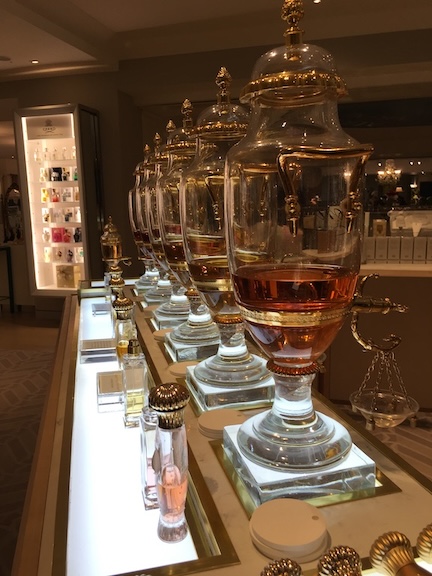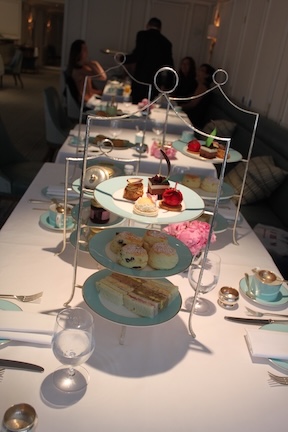Fortnum and Mason

One of the highlights of our visit to London was having Afternoon Tea in the The Diamond Jubilee Tea Salon at Fortnum and Mason.
Fortnum and Mason was established in 1707 in Picadilly, London. William Fortnum, who worked as Queen Anne’s footman, began the shop with his landlord, Hugh Mason. Queen Anne required fresh candles every night and Fortnum took the used candles, selling them for a profit. Eventually, he had earned enough to leave service to Queen Anne and start the business.
Fortnum and Mason is lovely and has six levels of goods to explore. If you enjoy picnics, the store is known for its selection of hampers.
I loved the view from the circular atrium which spans several levels.

The second level contains the Fragrance and Beauty department. I had never seen glass perfume decanters before and I thought they were beautiful. The light reflecting off the liquids inside the containers added to the effect.

The tea salon is located in the top level of the store. The selection of teas is extensive and each person gets to select their own tea pot filled with a tea of their choice. The tiered tray was filled with delicious sandwiches, scones and clotted cream, and treats.

Afternoon tea at Fortnum and Mason was a memorable experience.
Research Note
During my research into the history for Fortnum and Mason, I found the link to British History Online which suggests that there is no evidence to support the story of the beginnings of Fortnum and Mason (refer to footnote 4 of the British History link). Whether the story of a partnership between William Fortnum and his landlord, Hugh Mason is true, Fortnum and Mason is a historic landmark and a joy to peruse.
If you’re ever in London, consider visiting Fortnum and Mason.
Resources
https://www.fortnumandmason.com
https://www.british-history.ac.uk/survey-london/vols29-30/pt1/pp251-270
